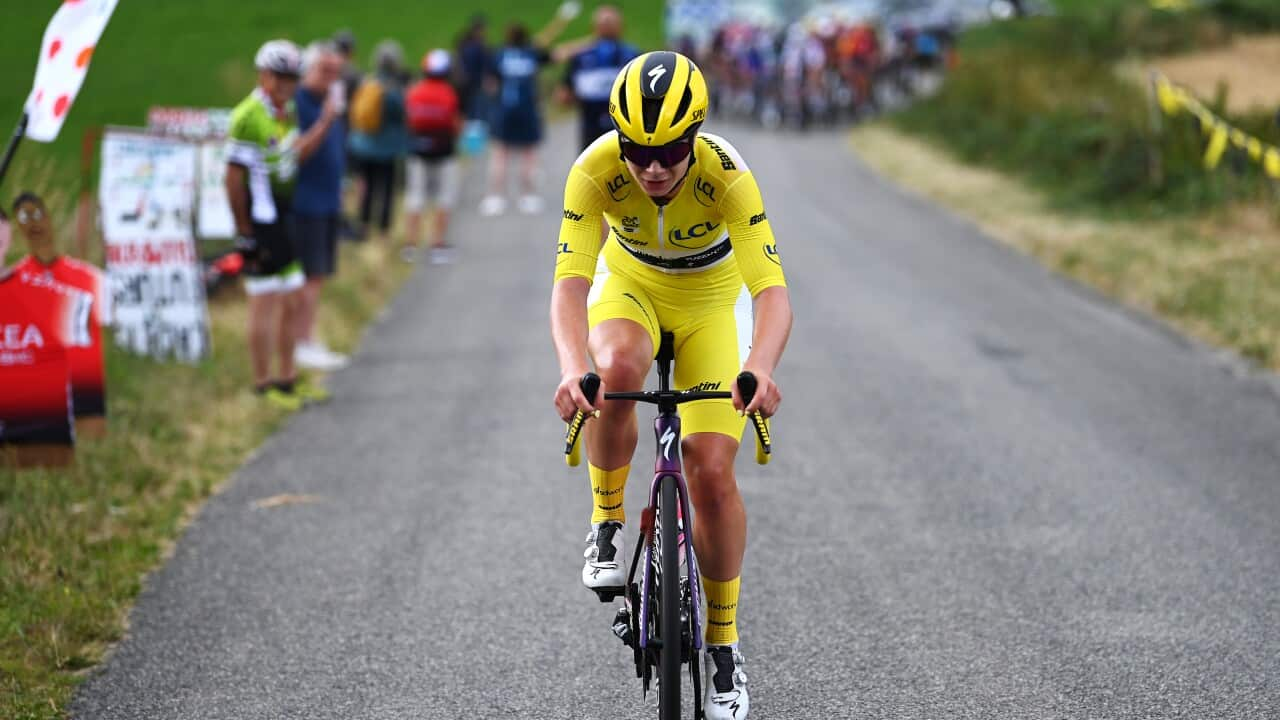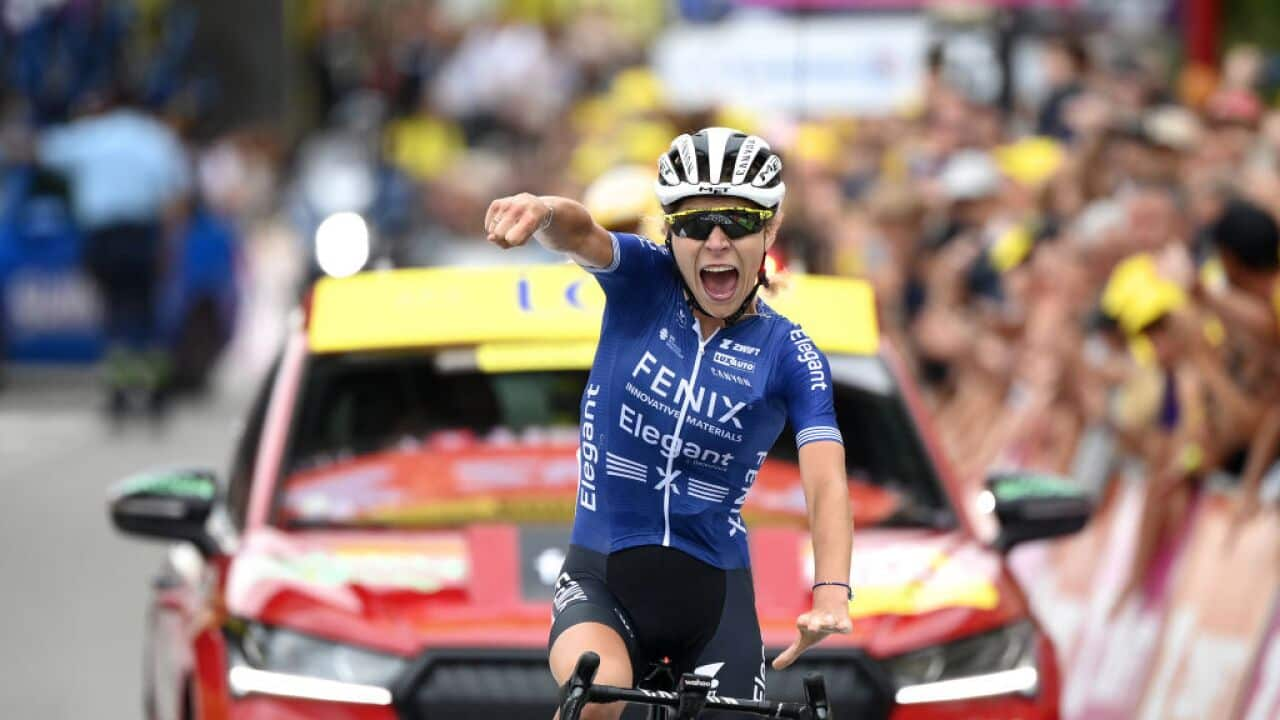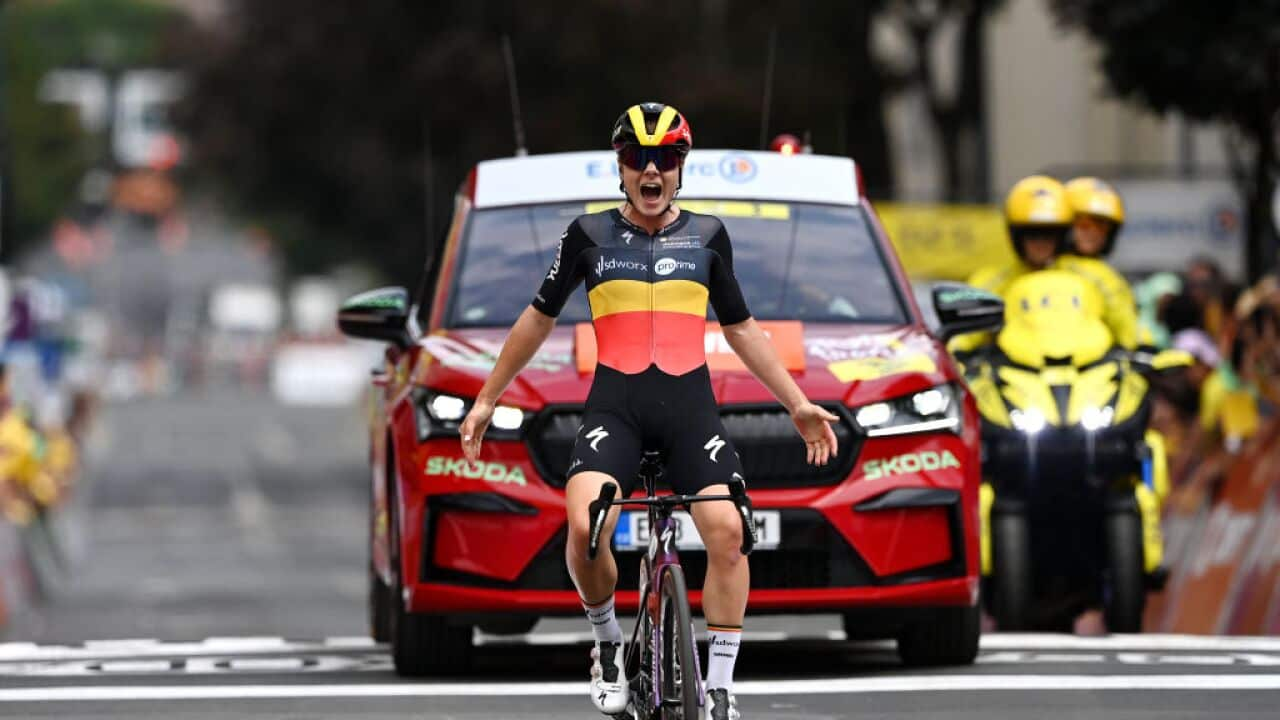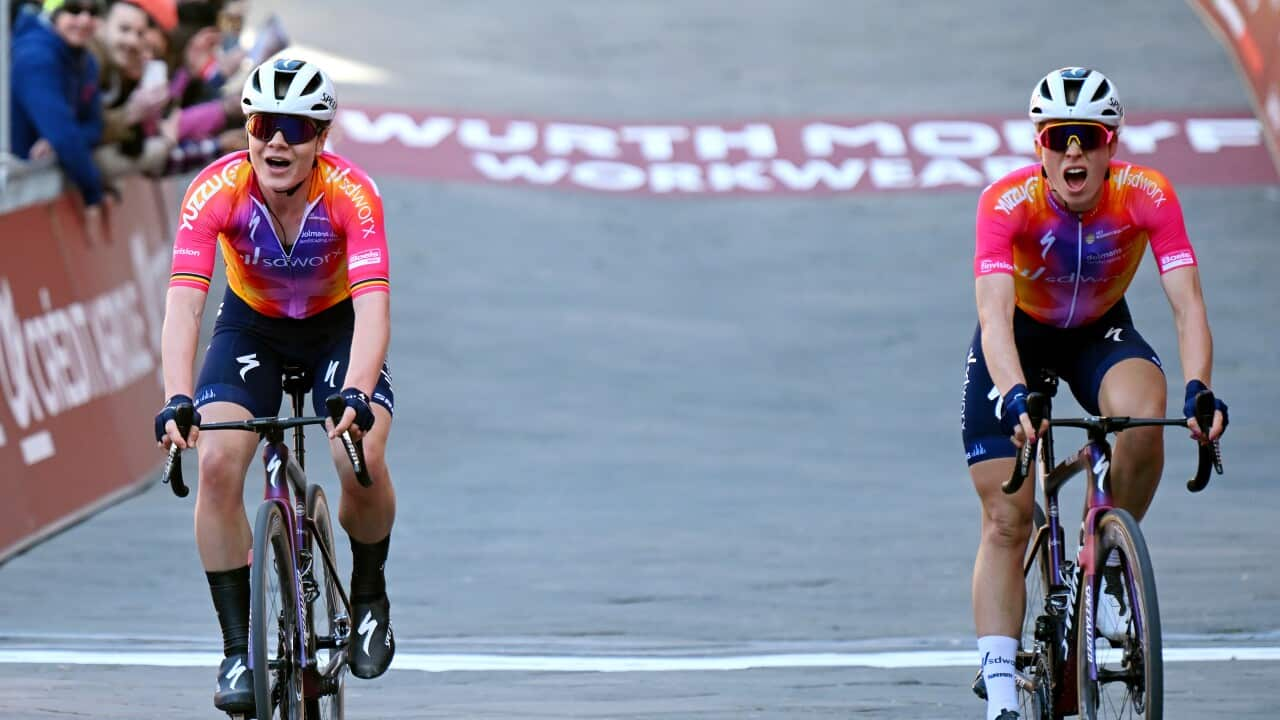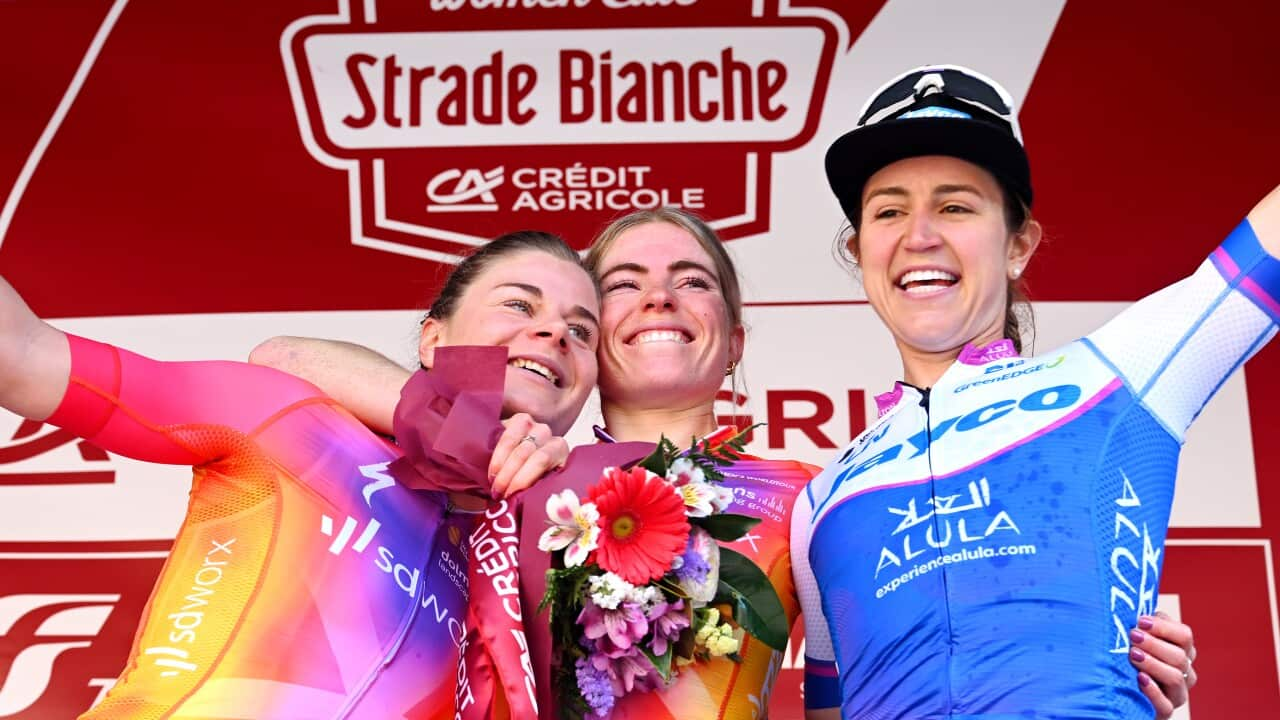The place to watch the Tour de France Femmes avec Zwift is right here on SBS. Replays, mini stage recaps, highlights and live streaming can be found on the and the available for download on and .
Stage 4 of the Tour de France Femmes was a fascinating watch, but infuriating at times from a neutral viewer wanting to see the race taken to SD-Worx.
It was a stage where they were vulnerable, harkening back to a contentious finish at Strade Bianche, when teammate came up against teammate for the win.
After a few initial attacks a 14-rider breakaway jumped away early in the race on the Category 4 climb of the Col de Crayssac. The group got a good gap and continued to build their advantage, with most major teams represented in the move.
No teams committed to chasing the breakaway immediately, and it wasn’t long before the best-placed rider of the escapees, Audrey Cordon-Ragot (Human Powered Health) was in the virtual yellow jersey, with still 137 kilometres to race.
The largely flat early part of the stage would have been relatively easy to mount at least a solid tempo chase to keep the gap within check, but the peloton, and in particular, yellow jersey holders SD-Worx, let the advantage blow out to just under ten minutes before committing any riders.
SD-Worx had Christine Majerus in the move, but still needed to keep their general classification bid viable, with some high-quality riders potentially taking minutes in the battle for the overall in the second Tour de France Femmes avec Zwift.
With 60 kilometres remaining, SD-Worx and Canyon-SRAM committed more riders to the pursuit and the gap started to come down steadily.
The breakaway wasn’t particularly organised, there was a lot of free-wheeling within the group and by 30 kilometres Cordon-Ragot had experienced enough and was gesticulating at her companions in frustration.
Behind, the gap was melting to the peloton as Lorena Wiebes (SD-Worx) set a hefty tempo as the race entered the hard climbs on the back end of the stage.
Then there was a near inexplicable attack by Kopecky over the top of the climb of the Côte de Colombiès, with still over a five-minute gap to bridge to the breakaway and plenty of riders left to chase within the peloton.
She was duly chased back, and maybe the attack had its desired effect, as Movistar and Lidl-Trek then decided to take on the burden of chasing, despite each having a rider in the breakaway, respectively Sheyla Guitterez and Lucinda Brand, with a good chance at victory.
Maybe they were trying to make things hard for their GC leaders to try and split things up, but in reality they were just taking a burden off SD-Worx and doing what the Dutch team would be doing anyway but saving their rival’s riders.
Kopecky then attacked on the Côte de Moyrazès, with others either not able or not willing to follow, but then teammate Demi Vollering went to the head of the peloton to set the tempo. For the life of me, I can’t understand the motivation in the team tactics of that.
“It’s Vollering chasing her teammate in yellow, it’s a melon-scratcher,” said SBS commentator Matt Keenan in coverage, summing it up succintly.
“How does this benefit SD-Worx?” was a question posed by Bridie O’Donnell later, with no answer forthcoming.
The way I rationalise it, it seems like Kopecky was racing to protect her yellow jersey, while Vollering was doing her own thing for the overall win at the end of the race. Rather than committing for one team goal, there was a split purpose at the heart of SD-Worx.
Kopecky was dragged back when Movistar played their card, a big attack from Annemiek van Vleuten joining up with breakaway rider Guitterez, something that proved useful when van Vleuten was dropped from Vollering’s wheel, the two favourites for the yellow jersey then matching each other’s attacks and drifting back to the elite chasing group.
From there, it was pretty straightforward, it was clear that Kopecky would retain yellow as Kastelijn's gap reduced, and she did the pacing into the final climb, where Vollering countered over the top of van Vleuten's surge up the final incline to take second on the stage, briefly celebrating before realising that she hadn't won.
It was a good result in the end for SD-Worx, Kopecky kept yellow and Vollering took a few seconds on the general classification, but there are some clear fault lines in the team's tactics and commitment that could have been better exploited by the other teams by forcing the work onto their rivals.
Kopecky has been saying all the right things in interviews, that she’s happy to commit to Vollering and go all-in for her teammate. She certainly was key in helping Lorena Wiebes to her Stage 3 victory, but reserved something from the leadout to sprint to third on the stage.
"My moves were mainly to help Demi [Vollering] attack, maybe drop GC contenders and help her towards the finish," said Kopecky after stage 4. "At one point, the situation was confusing, I didn’t know the time gaps.
"On the final climb, we managed to bridge a few riders but I heard on the radio that Yara [Kastelijn] was at the front with a 1-minute gap."
If it was to set act as a stepping stone for a Vollering attack, why didn't Vollering attack? And why would you do that as a tactic and then have Vollering pace the chasing group up the climb, it really doesn't make sense.
Now, there may be some more fractures in the Kopecky/SD-Worx relationship, most notably on display in a past acrimonious finish to Strade Bianche, where Vollering and Kopecky went 1-2, but had the Dutchwoman swearing at her teammate over the finish line after the Belgian tried to sprint against her, apparently without telling her first.
There has been a great show of patching things up since, but Kopecky remains a rider with clear ambitions and targets for herself, sometimes freelancing from her own team.
